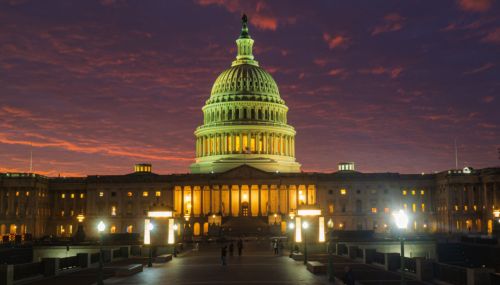All
Retirement Accounts Enhance Business and Employee Relations

While there are no federal requirements for companies to provide retirement plans for employees, many states have such mandates on their books. Retirement plans offer companies benefits beyond meeting legislative mandates, however, including tax credits, better employee recruitment, and reduced employee turnover.
In addition, the federal SECURE Act of 2019, enacted during the first Trump administration, and SECURE 2.0 of 2022, signed into law during the Biden administration, have created additional incentives for businesses and employees to invest in retirement programs.
Better Employee Acquisition and Retention
Staffing is an ongoing issue for companies, from management positions to office personnel to technicians and drivers. A recent Transamerica survey revealed that 88 percent of workers value a 401(k) or similar plan as an important benefit, and 81 percent say that retirement benefits offered by a prospective employer would be a major factor in their decision to accept an offer. This has been seen to be even more important for younger applicants.
Research also shows that providing a retirement plan can significantly reduce employee turnover, and company contributions and vesting schedules create powerful incentives for employees to stay. These employees are often more efficient and less stressed: PricewaterhouseCoopers (PwC) has determined that 57 percent of employees claim that finances are a top source of stress, and 44 percent claim that financial stress has caused them to be distracted at work. Offering a retirement plan communicates that the company is concerned about its employees’ long-term financial health.
With the latest options offered by SECURE 2.0, companies can also offer to offset an employee’s student loan payments, by deferring the amount of the employee’s loan payment as their regular retirement plan payment, and can continue to pay any plan match amount. This too, could be a powerful incentive to “sweeten the pot” for potential new employees.
SECURE Act of 2019
The Setting Every Community Up for Retirement Enhancement (SECURE) ACT was the first major federal retirement-related legislation since 2006. It was designed to encourage more businesses to offer retirement plans and more employees to participate.
SECURE made it easier for small businesses to enroll in Multiple Employer Plans, such as the retirement benefits offered through NEFI, removed maximum age limits on retirement contributions from individuals, raised the minimum age for required minimum distributions from 70-½ to 72, and eliminated the “stretch IRA” for non-spouse beneficiaries. Under SECURE, employees can make penalty-free withdrawals up to $5,000 from their retirement accounts within a year of a child’s birth or adoption.
SECURE also made part-time employees eligible to participate in the company-offered retirement plan, if they were over 21 and had worked three or more consecutive years at the company, clocking more than 500 hours per year.
Under SECURE, small businesses may be eligible for a tax credit up to $5,000 to defray plan start-up costs, and earn an additional $500 per year when they create a 401(k) plan with automatic enrollment. Companies offering benefits through a Multiple Employer Plan (MEP) are now shielded from liability from potential misconduct of other plan participants.
SECURE 2.0
The SECURE Act was enhanced in December 2022, as part of the “Consolidated Appropriations Act, 2023,” which included a package of retirement savings provisions that came to be known as SECURE 2.0. Many of the provisions of SECURE 2.0 were deferred, becoming effective each year through January 1, 2027, with a large tranche having taken effect on January 1, 2025.
SECURE 2.0 made the following changes to the original SECURE Act:
- Small businesses can now receive a tax credit up to 100 percent of start-up costs.
- Businesses may offer small incentives such as gift cards to encourage employees to participate.
- Employers can match employees’ student loan payment as retirement plan deferments.
- New employees must be automatically enrolled in 401(k) and 403(b) plans, starting at 3 percent and increasing annually to 10 percent, unless the employee opts out or changes their deferment amount.
- Employees can make a penalty-free withdrawal of up to $1,000 for emergency expenses.
- Part-time workers will be eligible for enrollment after two years
- Required Minimum Distributions (RMDs) has been pushed from 72 years old to 73 years old, and will rise to 75 by 2033.
- Penalties for failing to take an RMD have been reduced to 25 percent from 50 percent; and can be reduced to 10 percent if the oversight is corrected in a timely manner.
- Individuals 62 and older can make “catch-up” contributions of up to $10,000 per year.
- SECURE 2.0 makes it easier for businesses to participate in MEPs.
Winter Retirement Plan Check-Up
The IRS has created Check-Up plans for companies to use to review their retirement plans. Completing the check-up can reduce paperwork, cut administrative costs, safeguard your employees’ money, increase tax return accuracy and minimize the extent of mistakes.
Simple, single-page versions of these checklists are available for SIMPLE IRAs, 401(k) plans, 403(b) plans, and others.
Sample checklist questions include:
- Has your plan document been updated within the past few years?
- Are the plan operations based on the plan document terms?
- Are all eligible employees participating in the plan?
Answering “yes” to all checklist questions may indicate that your plan is in good shape. Answering “no” to any of the checklist questions lets you know on the spot that you may have a mistake in the operation of your plan. You should review your answered checklist with your tax advisor in either case.
According to the IRS, common mistakes employers make with their retirement plans include:
- not covering the proper employees;
- not giving employees required information;
- not depositing employee deferrals timely;
- not depositing employer contributions;
- not following the terms of the plan document;
- not limiting employee deferrals and employer contributions to the proper maximum limits.
Mistakes should be corrected as soon as they have been identified, and may require the assistance of a professional benefits provider. In addition, laws related to benefit plans change often, and it is important to keep the plan up to date.
Professional Assistance and Multiple Employer Retirement Plans
Failure to properly maintain a retirement plan can open the company up to tax penalties and fines. It can also negatively affect the financial well-being of the company and its employees. Most businesses would be well served working with a professional benefits advisor.
A Multiple Employer Plan (MEP) is maintained by a sponsor, or group such as NEFI, that maintains the plan and master contract. Participants benefit from significant economies with the larger pool of companies and the professional management of the plans.
Offering an MEP can give employees the opportunity to set aside tax-deferred income for retirement, reduce their immediate taxable income, qualify for employer matching contributions, and make investing for their retirement automatic.
Companies that offer an MEP see:
- Potential cost savings compared to operating a single employer plan
- Fiduciary support
- Access to more investment choices
- Strong participant education support
- Business tax deductions
With an MEP, businesses save time and money on document preparation, compliance testing, form 5500 filing, quarterly participant statements, investment underwriting, and more.
NEFI’s plan administrator, Pleasant Street Wealth Advisors, works with member companies to develop a plan that suits their employee demographics, and offers plan design alternatives based on the unique aspects of the business.
For more information on the NEFI MEP, visit the Member Benefits section of NEFI.com or contact Nordo M. Nissi, III of Pleasant Street Wealth Advisers, at (918) 758-1604.
Related Posts
 New and Improved: NEFI Member Benefits Deliver More Value
New and Improved: NEFI Member Benefits Deliver More Value
Posted on October 17, 2025
 Retirement Accounts Enhance Business and Employee Relations
Retirement Accounts Enhance Business and Employee Relations
Posted on October 16, 2025
 NSC Study: Employees Do Not Feel as Safe as Employers Believe
NSC Study: Employees Do Not Feel as Safe as Employers Believe
Posted on October 16, 2025
 The OBBB and Your Fuel Business: A Summary
The OBBB and Your Fuel Business: A Summary
Posted on September 19, 2025
Enter your email to receive important news and article updates.
